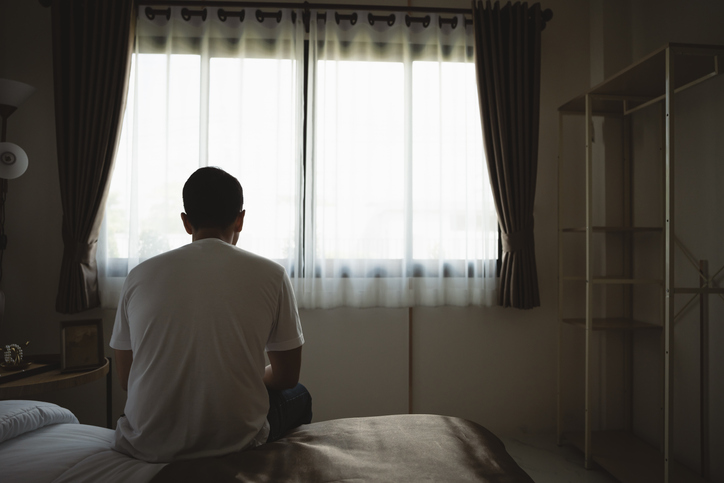Seasonal Affective Disorder (SAD) is a form of depression that typically occurs during the fall and winter months due to reduced sunlight exposure. This change disrupts the body’s natural rhythms, lowers serotonin levels, and increases melatonin production, all of which impact mood, sleep, and energy. In this blog, we explore the causes, symptoms, and most effective strategies to manage SAD so you can protect your mental health during the colder months.
What Causes Seasonal Affective Disorder?
SAD is primarily triggered by the change in daylight hours during fall and winter. Here’s how it affects the body:
- Disrupted Circadian Rhythm: Less sunlight disrupts the body’s internal clock, leading to changes in sleep-wake cycles and energy levels.
- Lower Serotonin Production: Sunlight exposure helps the body produce serotonin, a mood-regulating brain chemical. Less light means less serotonin, which can contribute to depression.
- Increased Melatonin Production: Shorter days and darker evenings trigger increased production of melatonin, a sleep-promoting hormone, leading to feelings of fatigue or sluggishness.
How to Combat SAD
- Increase Exposure to Natural Light
Since lack of sunlight is one of the main causes of SAD, increasing exposure to natural light can significantly improve symptoms. Try to spend time outside during daylight hours, especially in the morning, as morning sunlight has the most positive effect on your body’s internal clock. If it’s too cold to spend time outside, position yourself near a window to allow natural light into your space. Natural light exposure, even on overcast days, is beneficial.
- Maintain a Consistent Sleep Schedule
Shorter days and longer nights can disrupt your sleep-wake cycle. To combat this, stick to a regular sleep schedule by going to bed and waking up at the same time every day, including weekends. A consistent schedule helps your body regulate melatonin production and maintain energy throughout the day.
Tips for Better Sleep:
- Avoid blue light from phones, tablets, and screens at least 30-60 minutes before bed.
- Establish a calming bedtime routine, such as reading or meditating.
- Ensure your bedroom is dark, cool, and quiet to create the ideal sleep environment.
- Stay Active with Regular Exercise
Exercise naturally boosts endorphins, improves mood, and increases energy levels. Physical activity also supports better sleep, which is crucial when dealing with SAD. Aim for at least 30 minutes of movement most days of the week. Activities like walking, yoga, strength training, or online workout classes are all effective options.
If it’s too cold to exercise outdoors, opt for indoor workouts. Stretching, resistance band exercises, or even dance routines can keep your body moving and improve your mental health.
- Prioritize Mental Health Support
If symptoms of SAD are affecting your daily life, consider seeking support from a mental health professional. Cognitive Behavioral Therapy (CBT) is an effective treatment for SAD, helping people recognize and reframe negative thought patterns. Mental health professionals can provide coping strategies to improve emotional well-being and help you manage seasonal depression.
- Take Care of Your Body with Nutrition
The foods you eat affect your mood and energy. During colder months, many people crave carbohydrates and sugary snacks, but these can cause blood sugar spikes and crashes. Instead, focus on whole, nutrient-dense foods that support mental health.
Foods to Include:
- Fatty fish (like salmon or mackerel) for omega-3s and vitamin D
- Eggs and fortified dairy products for natural sources of vitamin D
- Nuts and seeds for healthy fats and magnesium
- Whole grains to help stabilize blood sugar
- Leafy greens (like spinach and kale) for magnesium and essential vitamins
If you have limited exposure to natural sunlight, a vitamin D supplement may help, but be sure to consult a healthcare provider before adding supplements to your routine.
- Try Light Therapy
Light therapy is one of the most effective treatments for SAD. It involves using a light therapy box that mimics natural sunlight. Sitting near a therapy box for 20-30 minutes daily (preferably in the morning) helps reset your body’s internal clock, reduce melatonin production, and boost serotonin levels. This can improve energy, sleep patterns, and mood.
When Should You Seek Professional Help?
If you’ve tried lifestyle changes — like increasing light exposure, improving your sleep routine, eating better, and getting more exercise — but your symptoms persist or worsen, it may be time to seek help from a healthcare professional. While mild cases of SAD can be managed with at-home strategies, more severe cases may require additional support.
When to Seek Professional Help:
- If symptoms persist for weeks or interfere with daily life, work, or relationships.
- If you experience significant changes in sleep patterns or appetite.
- If you notice difficulty concentrating, decision-making issues, or feelings of isolation.
- If you feel persistent sadness, hopelessness, or have thoughts of self-harm.
A healthcare provider can evaluate your symptoms and determine if additional treatment is necessary. They may suggest antidepressant medications, such as Selective Serotonin Reuptake Inhibitors (SSRIs), which help stabilize serotonin levels. Medication is often combined with therapy or lifestyle changes for the most effective treatment plan.
Get Support at Noble Community Clinics
If you’re struggling with Seasonal Affective Disorder, you don’t have to face it alone. Noble Community Clinics provides mental health support, including counseling and treatment for SAD. Their compassionate team can help you develop coping strategies, access therapy options, and get personalized guidance to manage your mental health.
Book an appointment with Noble Community Clinics to take the first step toward feeling better this season. Early support can make all the difference!

